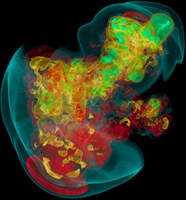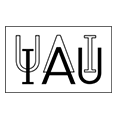German Astronomical Society announces its 2022 prizes
The German Astronomical Society is awarding the following prizes for outstanding achievements in astronomy: Hans-Thomas Janka will receive the Karl Schwarzschild Medal, Thomas Siegert the Ludwig Biermann Award, Tommaso Grassi and Stefano Bovino the Astrophysical Software Award, Arshia Maria Jacob the Doctoral Thesis Award and Manuel Vogel the Hans-Ludwig Neumann Prize 2022. Vanessa Guthier received the special prize in the federal competition Jugend forscht.
The most prestigious prize in Germany in the field of astronomy and astrophysics, the Karl Schwarzschild Medal, is awarded to Prof Hans-Thomas Janka from the Max Planck Institute for Astrophysics in Garching. The medal honours his research on the core-collapse supernova mechanism, explosive nucleosynthesis, and supernova neutrino physics. Thomas Janka has greatly advanced the theoretical understanding of supernova explosions by developing highly advanced hydrodynamic neutrino radiation codes for the simulation of these complex astrophysical phenomena. He has made major contributions to the field of modelling core-collapse supernovae during the past decade. His outstanding, cutting-edge numerical and theoretical work convincingly demonstrated that the neutrino-driven explosion mechanism can give rise to successful core-collapse supernova explosions in accordance with observations. He has also made very important contributions in the field of numerical models of neutron star mergers and gamma-ray bursts. Thomas Janka is adjunct professor at Technical University of Munich and has been a member of the German Astronomical Society since 1986. 
Dr Thomas Siegert is being honoured with the 2022 Ludwig Biermann Award. His expertise lies in the study of supernovae, novae and microquasars and their impact on the interstellar medium in our Galaxy. His results contribute to the understanding of the physics of thermonuclear explosions. He was able to show that microquasars produce large amounts of antimatter in the form of positrons which spread throughout the Galaxy and annihilate with electrons to produce gamma-ray emission. By measuring this emission in the Milky Way, he made the connection with dark matter models and further constrained them by observations of dwarf galaxies. Thomas Siegert is internationally recognized in nuclear astrophysics, has contributed to numerous publications and is an expert for the data analysis of ESA's INTEGRAL/SPI instrument. Thomas Siegert received his doctorate in 2017 from the Technical University of Munich. In 2021, he returned to Germany from San Diego where he worked on NASA’s COSI instrument supported by a DFG research grant, and is now establishing his own research group at the University of Würzburg since August 2022.
Dr Tommaso Grassi from the Max Planck Institute for Extraterrestrial Physics, Garching, and Dr Stefano Bovino from the Department of Astronomy, Universidad de Concepción, Chile, jointly receive the Astrophysical Software Award for the development of the astrochemistry package KROME. KROME is an open-source code that was developed to include chemistry and thermal processes in numerical hydrodynamical simulations to properly describe the thermal evolution of gas. It is a key tool to study, among the others, star-forming regions, galaxy evolution, black hole formation, complex chemical pathways, as well as to compare simulations with observational data of atomic or molecular lines. KROME can model any chemical network for which the reaction rates are known and includes modules to incorporate dust physics. The development of KROME has expanded the possibilities for modelling thermochemistry in astrophysical simulations and has contributed to significant advances in astrophysical knowledge and to the education of students and postdocs in astrochemistry.
The AG awards the 2022 Doctoral Thesis Prize to Dr Arshia Maria Jacob. After studying at the University of Bonn, Arshia Jacob completed the research for her dissertation at the Max Planck Institute for Radio Astronomy (MPIfR) and graduated summa cum laude in 2021. Since then, she has been conducting research as a postdoctoral researcher at Johns Hopkins University in Baltimore. In her dissertation, Arshia Jacob addressed fundamental, long-known but still largely unanswered questions about the physics and chemistry of the interstellar medium. She collected data for various molecules and combined the results from the terahertz range with long-wave radio data. With innovative analytical methods and model calculations, her research has aided in addressing questions related to the chemical evolution of the Milky Way and the galactic distribution of the ionisation rate of cosmic rays, by extending the diagnostic properties of simple molecules. Her outstanding research was also recognized with the Max Planck Society’s Otto Hahn Medal and its Otto Hahn Award.
The Hans Ludwig Neumann Award 2022 goes to Manuel Vogel. He teaches mathematics and science at the Gymnasium Spaichingen, is educational director on the board at the student research center Südwürttemberg and, as site manager in Tuttlingen, supervises courses and projects for students in the field of astronomy. Manuel Vogel writes for the German astronomy didactic magazine Astronomie+Raumfahrt, is a member of a team of authors for the Klett MINT / Baden-Württemberg Foundation, and regularly takes on the leadership of advanced training courses on the topic of "research and invention". He has also worked as a supervisor for schoolchildren who have won Jugend forscht awards. Most recently, he supervised the state winner of Baden-Württemberg. As the German SOFIA ambassador for schools, Manuel Vogel was part of the team of teachers at the flying observatory the SOFIA and reported on it in Astronomie+Raumfahrt.
Vanessa Guthier from the Landesschule Pforta in Naumburg received a special prize from the AG for the best work in the field of astronomy in the national competition Jugend forscht (youth's research). In her research project, she investigated whether star clusters can create conditions under which high-energy gamma radiation is produced and found evidence that this is the case. In doing so, she won the prize in the field of geo and space sciences. In addition to the special prize for astronomy, she also received the DFG Europa Prize and will thus take part in the European Union Contest for Young Scientists.
The award ceremonies will take place during the annual meeting of the German Astronomical Society at the University of Bremen from 12-16 September, 2022.
Picture: The image of the supernova explosion on the top right shows the strongly non-spherical shock front and the turbulent distribution of ejecta in the interior of a 19 solar-mass star more than 7 seconds after the onset of its supernova explosion. The maximum diameter of the structure is more than 130,000 km and grows with about 10,000 kilometers per second. Credit: Naveen Yadav and Robert Bollig (MPA).
Contact:
Janine Fohlmeister (Press officer of the German Astronomical Society)
Phone: +49 / (0) 331 / 7499-802




